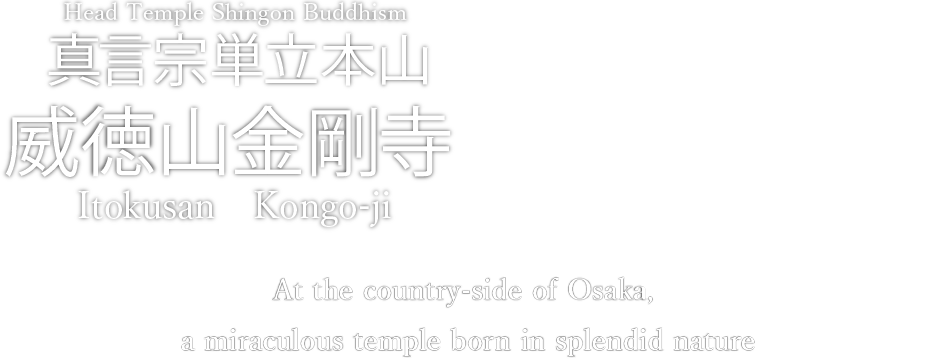[See in a large map]
136,Kuragaki, Nose-cho, Toyono-gun, Osaka-fu, 563-0113
Head Temple Shingon Buddhism
真言宗単立本山威徳山 金剛寺
Itokusan Kongo-ji
At the country-side of Osaka, a miraculous temple born in splendid nature



